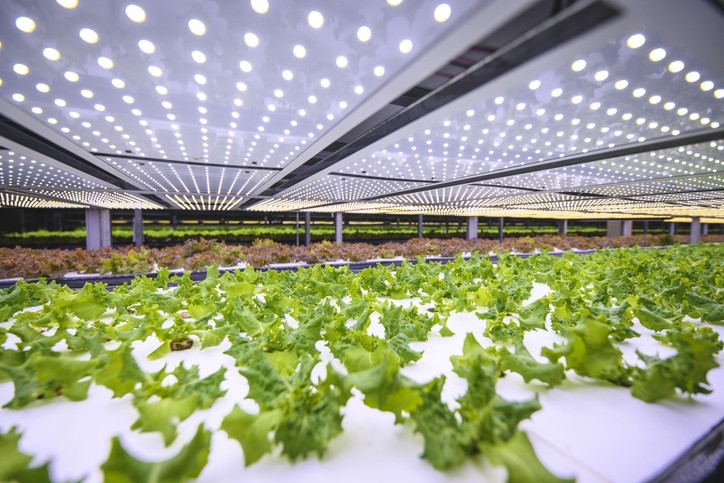How AI can slash indoor farming energy use

The research published in Nature Food. The world population is expected to grow to 9.7 billion people by 2050, according to the United Nations. This growth, combined with climate change and urbanisation, requires fixes for the flaws in the world’s current food production systems, the researchers said.
Indoor farming methods, such as plant factories with artificial lighting, are less vulnerable to climate change, but they’re energy intensive and require careful resource management to be sustainable.
“Existing environmental control systems are not smart enough,” said Fengqi You, professor in energy systems engineering at Cornell.
By using AI techniques like deep reinforcement learning and computational optimisation, the scientists analysed lettuce cultivated in indoor agriculture facilities in eight diverse locations in the US as well as Iceland and Dubai.
How does AI reduce energy use?
AI reduces energy use by optimising lighting and climate regulation systems. Energy use dropped to 6.42 kilowatt hours per kilogram fresh weight (energy needed or used to produce one kilogram of indoor-grown lettuce) from 9.5 kilowatt hours per kilogram fresh weight, in places that use non-AI technology. The researchers found that for warmer areas, such as Dubai or the southern US, AI reduced energy usage to 7.26 kilowatt hours per kilogram fresh weight, down from 10.5 kilowatt hours per kilogram fresh weight.
Low ventilation during light periods (16 hours of simulated sunlight) and high ventilation during dark periods (eight hours that simulate night) provided an energy-efficient solution for optimal indoor carbon dioxide levels for photosynthesis, oxygen for respiration and plant growth, and balanced other ventilation requirements.
“This is a very similar concept to smart homes,” You said.
“We want to be comfortable at home while reducing energy use; so do crops. This work focuses on a smart system to make food production optimal, sustainable and lower the carbon footprint. That’s what AI does very well. We can save quite a bit if we use AI to optimize the artificial lighting and other energy systems carefully.”
Methane emissions ‘rising faster than ever’
It comes as separate research shows global methane emissions over the past five years have risen faster than ever.
That’s despite more than 150 nations pledging to slash by 30% this decade under a global methane pledge.
The potent greenhouse gas, the second-largest contributor to climate change after carbon dioxide, has risen by 20% over the past two decades despite global efforts to curb it, according to the study published by the Global Carbon Project which tracks greenhouse gas emissions worldwide.
In the past five years, methane concentrations have surged faster than “in any period since record-keeping began”, the study said. Increases are being primarily driven by coal mining, oil and gas production and use, cattle and sheep ranching, and decomposing food and organic waste.
In 2020, 41.8 million tonnes of methane entered the atmosphere, double the average amount added yearly in the 2010s, and over six times the average in the previous decade.
The trend “cannot continue if we are to maintain a habitable climate,” researchers warned.
“Only the European Union and possibly Australia appear to have decreased methane emissions from human activities over the past two decades,” said Marielle Saunois of the Université Paris-Saclay in France. “The largest regional increases have come from China and southeast Asia.”
The recent spike in emissions of the gas comes despite the Global Methane Pledge, which saw 150 countries commit to work towards cutting 2020 global emissions levels by 30% by 2030.
The goals of the pledge, notably not signed by China, Russia or India, “seem as distant as a desert oasis”, said Rob Jackson from Stanford University. “We all hope they aren’t a mirage.”




